Christian Nodal Didn’t Want To Be ‘Anyone’s Shadow’ — So He Became Mexico’s Mariacheño Megastar
- Oops!Something went wrong.Please try again later.
It’s the tattoos that really make Christian Nodal stick out like a sore thumb. With his inked-up body — and face — he looks more like a rapper or rock star than the exploding regional Mexican artist he is.
“I didn’t want to be anyone’s shadow,” Nodal declares. “I felt that the genre was stigmatized under all these stereotypes, and I wanted to break all of that because I was unsatisfied to see that our genre wasn’t going far enough.”
More from Billboard
Here Are the Lyrics to Shakira & Cardi B's Flirty 'Punteria' Translated to English
Inside Selva Negra, Maná's Ecological Foundation Benefitting Turtles, Trees & More
Since launching his career in 2017, Nodal, now 25, has made a name for himself (sometimes with sharp elbows) as a maverick in a genre long bound by tradition. From the time he started at age 18, he has revolutionized regional Mexican music by pioneering mariacheño, a subgenre fusing mariachi’s strings and horns with the norteño accordion.
“I didn’t want to disrespect anyone, much less the mentality of some of these [regional Mexican] legends who think the genre should sound and look a very specific way,” he explains. “But that wasn’t me. I didn’t feel part of it. I wanted to make it my own.”
Christian Nodal plays Billboard Presents THE STAGE at SXSW on March 15. Get your tickets here.
When we meet in mid-December at Lienzo Zermeño — where charreadas, or Mexican rodeos, take place in the middle of Jalisco’s bustling city of Guadalajara — Nodal beams with pride as he recounts the arc he has followed to become one of Latin music’s biggest stars in a few short years. He may look like a malote (bad guy) — he jokes about the role he would probably get cast for in a movie because of his tattoos — but he’s far from it, offering friendly hellos to the ranch’s workers and flashing a shy smile to the bystanders who recognize him but are too timid to introduce themselves.
Nodal’s entry into the regional Mexican world was a bit less genteel. When he started his career, the music’s leaders were purists who leaned heavily on the traditional sound that had worked for them — and for the genre that has been around for more than a century. That left little room for experimentation, and some in the industry initially balked at Nodal’s unorthodox approach. “I think the first year they saw me as the new kid, but by my second year, I don’t think they liked that I was still around. I saw a face of the regional Mexican that was quite raw, real and ugly,” Nodal says. “I was disappointed and thought, ‘OK, we probably won’t be creating a bond, much less collaborating. Fine. I’m going this way and [making] regional music bigger.’ ”
To that end, Nodal has collaborated with artists well beyond regional Mexican, including Romeo Santos, Kany García, David Bisbal, Sebastián Yatra and Maná — but without sacrificing his mariacheño style. (His few collaborations with regional acts include Alejandro Fernández, Banda MS and Ángela Aguilar.) He has also sought out new songwriting voices, including the Grammy Award-nominated Edgar Barrera, who co-wrote some of Nodal’s biggest hits.
That willingness to challenge genre norms propelled the mariacheño singer — whose urban cowboy aesthetic incorporates leather vests, diamond necklaces, statement earrings and heavy rings on his fingers — to a remarkable year both professionally and personally in 2023. In December, he wrapped his Foraji2 Tour, a 31-date arena run produced by Cárdenas Marketing Network that kicked off in August and followed his 22-date 2022 Forajido tour. He won his sixth Latin Grammy Award (best ranchero/mariachi album) for Forajido EP2, and he scored his 15th No. 1 on the Regional Mexican Airplay chart — a record for a solo artist since the list launched in 1994 — with that set’s “Un Cumbión Dolido.” And he became a father when he and his partner, Argentine rapper-singer Cazzu, welcomed a baby girl in September.
“I remember those times when I would come down from the stage and feel alone,” says Nodal, who now lives in Argentina with Cazzu and their daughter. “Now I come down to a stroller with my baby in it, and it all seems perfect. She has already been on tour with us, and I thought it would be hard, but she’s a rock star,” he says, getting choked up. “When she was born, I was feeling exhausted. I don’t know how I managed to change diapers, but she gives me energy, motivation and strength.”
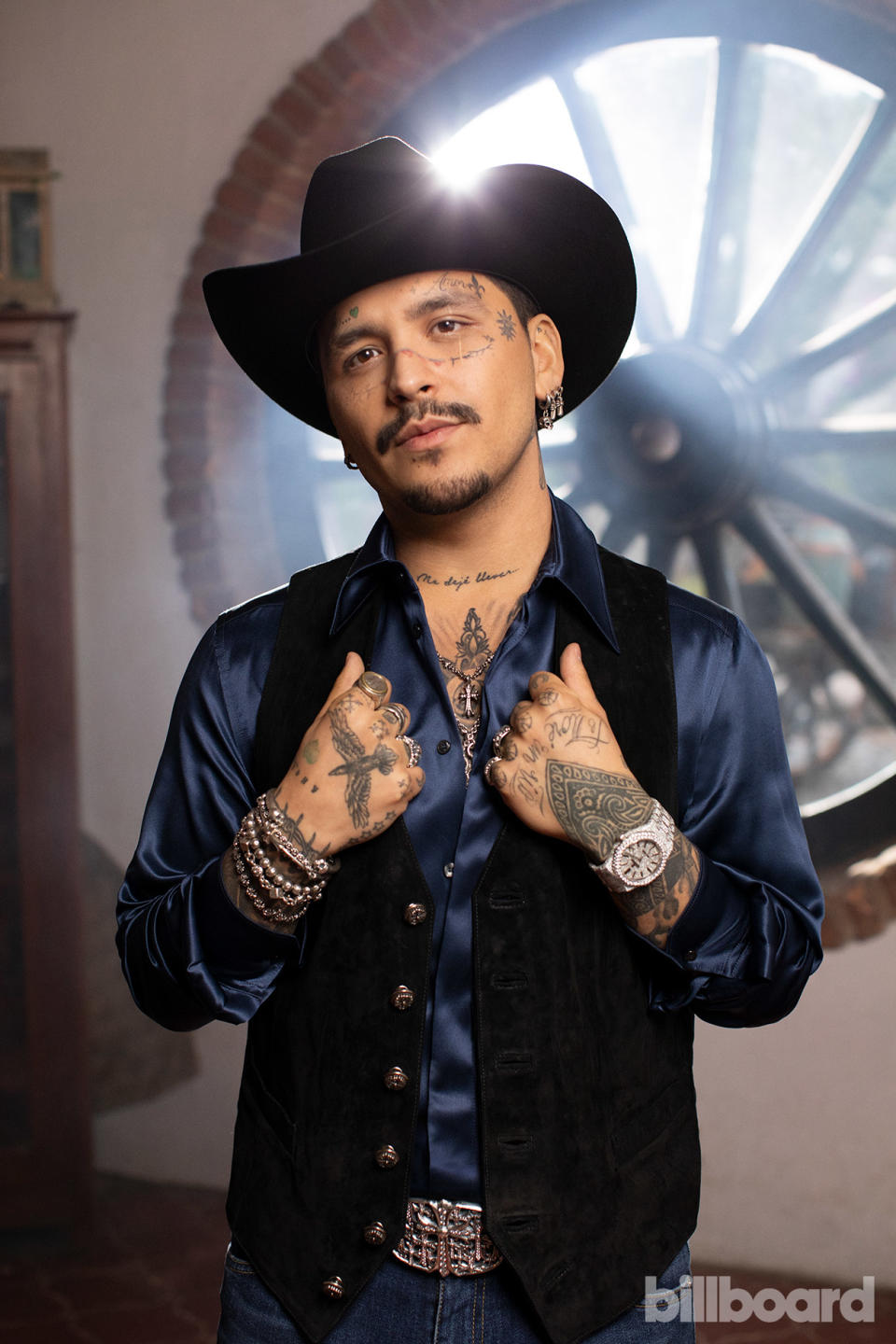
A lot has changed — not just in his personal life, but in the broader Latin music landscape — since Nodal released his first single, the achingly beautiful “Adiós Amor,” in 2017. Powered by wailing trumpets, a stirring accordion and Nodal’s strikingly mature and evocative baritone, the song quickly established him as one of the great vocalists in the genre. It earned him his first Regional Mexican Airplay No. 1 and spent seven weeks atop the chart. “When working with Christian, these two things are always present: He’s like an artist from another planet when making music, and [he sings] it in a spectacular way,” says Afo Verde, chairman/CEO of Sony Music Latin-Iberia, which signed Nodal in early 2022.
Now, thanks to the doors Nodal has opened in just a few short years and the sound he pioneered, regional Mexican is dominating the Latin charts, and a new crop of artists — who sing corridos tumbados, tumbados románticos, sad sierreño, or whatever the latest iteration of the genre is, and are keen to collaborate — has taken the lead, helping globalize the music that, while a backbone of Latin, was long considered meant for a niche audience. But none of those performers have dominated quite like Nodal — and he has done it on his own terms.
“Everything can coexist,” he says. “I enjoy fusing sounds, but I don’t run toward something just because it’s working [for others]. I’m very careful not to deviate from my purpose. I still need to feel proud of what I do.”
Born in Sonora, a northern Mexican state that borders Arizona, and later raised in Guadalajara and Ensenada, Baja California, Nodal grew up in a musical household, listening to pop, rock, rap, bachata and more. But he also developed a great respect for regional Mexican — it “practically fed us,” he says — from an early age. He loved to watch his grandfather play the trumpet: “I think before I wanted to be a singer, my goal was to be a trumpeter like Arturo Sandoval.” His father and manager, Jaime González, who has also played the instrument since childhood, is an industry veteran who managed late sierreño singer Ariel Camacho, a major inspiration to Nodal. Today, González’s record label/management company JG Music includes Nodal, Los Plebes del Rancho de Ariel Camacho and Los Elementos de Culiacán. González met Nodal’s mother, Cristy Nodal, while they were in the same musical group, in which she sang lead.
“We’ve been musicians all our lives,” González says. “From a very young age we instilled music in all our children, but more as a hobby or tool to help them with their emotions. Not so much as a business, because we have been doing this for a long time and it is not easy.” But Nodal wanted to sing, so his mother, a longtime mariachi singer, taught him. “They were committed,” González remembers. “At first, I didn’t want to get on board because I didn’t have the time and I didn’t want this complicated career for him because he’s very sensitive. But when I would come back from tours with Ariel, Christian and his mom had several songs already written, and I said, ‘OK, fine. I’ll produce an album for you.’ ”
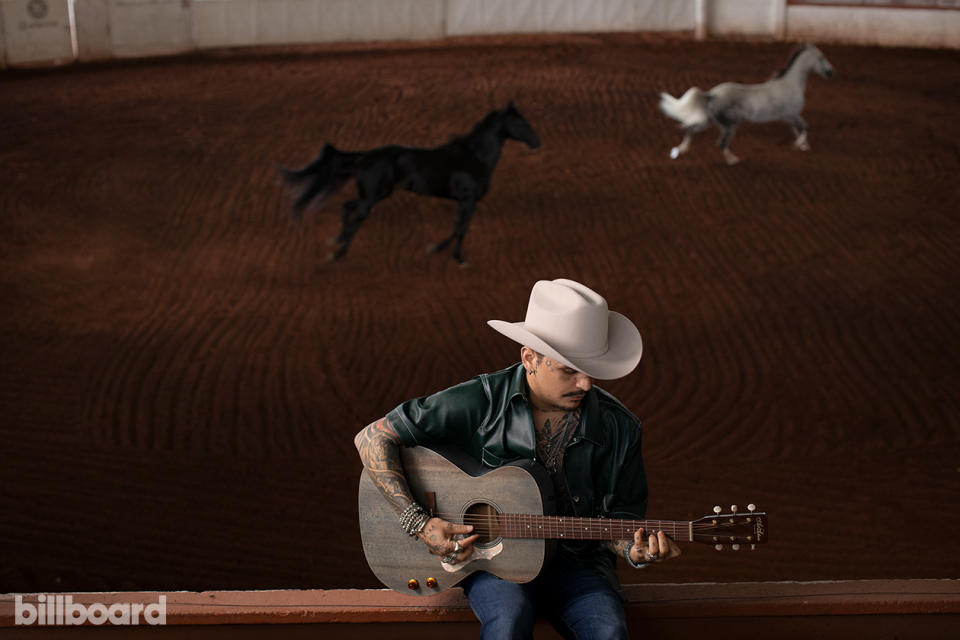
That first unofficial album included a cover of “Adiós Amor,” a song previously recorded by Los Dareyes de la Sierra. His mother wanted him to record it in mariachi style, but “I really thought of mariachi as music for older men,” Nodal says. He honored her wish, but at Nodal’s request, his father added the norteño accordion — to represent his “esencia sonorense” (Sonora essence) — along with banda-style trumpets and subtle violins.
“People responded really well to it on social media,” González remembers. “It’s as if the world had been waiting for Nodal.”
When “Adiós Amor” went viral, Nodal’s team comprised Cristy, then his de facto manager, and González, who was his producer. “I remember I would see cars pass by [in Ensenada] blasting the cover I had uploaded to Facebook,” he says, laughing. But then he noticed a problem: No one knew he was the one singing the song. “I think people expected it to be an older man, and it was funny when I would be at clubs in Guadalajara and they’d play my song and I would be like, ‘Hey, that’s me,’ ” he says. “They could identify the song but not the face, and I wanted that to change. It was something that kept me up at night.”
Nodal needed support — and it came by way of Universal Music Latino/Fonovisa, which signed him in 2017 after “Adiós Amor” caught the labels’ attention. By that August, he had released his official debut album, Me Dejé Llevar, which peaked at No. 2 on Billboard’s Top Latin Albums list, his highest ranking on that chart. But after releasing two more studio albums between 2019 and 2021 under Universal, a feud with the label turned public when Nodal took to Instagram Live to reveal he would not be renewing his contract; shortly after, in early 2022, Nodal signed with Sony Music Latin in a partnership with Sony Music Mexico. “When you’re young and you don’t know about these things, you do what you have to do to achieve your dreams,” says Nodal, who won’t share much more about the conflict. “If nothing goes wrong in your life, then you don’t learn.”
When Nodal met for the first time with Verde and his Sony colleagues Alex Gallardo (president of Sony Music U.S. Latin) and Roberto López (president of Sony Music Mexico), he made his expectations clear. “I told them that I want to have the freedom to work with any artist from any label, that I want freedom to decide when I’m going to release my albums and that I want to own my albums after a certain amount of time,” he recalls. “Afo, Alex and Roberto are people that I love very much, and they have shown me the good side of the industry. They are putting their life, their faith, their effort into the growth of an artist.”
“What helped us to build trust with Christian and a great team was that from the beginning we had great chemistry,” Gallardo says. “We knew how to listen to his needs and concerns, and we worked to provide him with as much support as possible and put at his disposal a team that would work for him and help him achieve his goals.”
For Sony, Nodal was a valuable roster addition — an “ambassador of Mexican music to the world … responsible for spreading the love for Mexican music to new generations in many countries,” as López puts it. He was also already an established star. His 2022 Forajido tour grossed $14.5 million and sold 147,000 tickets from 22 shows, according to Billboard Boxscore, and in 2023, he grossed $21.6 million and sold 259,000 tickets. Under Sony’s supervision, his star has only continued to rise. Nodal’s albums have earned a combined 2.2 million equivalent album units, according to Luminate, and he has 3.2 billion on-demand official streams in the United States. He has also placed 20 entries on Hot Latin Songs; five of them hit the top 10, including the No. 3 debut and peak of “Botella Tras Botella,” with Mexican rapper Gera MX in 2021. The pair’s norteño-tinged, hip-hop-infused track became the first regional Mexican song to enter the Billboard Hot 100 in the chart’s then 63-year history. (Today, more than 30 songs have reached the chart.)
“Christian was more ready for this moment than I was,” Gera MX says. “When we saw the song was blowing up, we called each other constantly. I asked him if this was normal, and he told me, ‘Guey, esto es único. [Dude, this is unique.]’ It had never happened before, much less with a mix of urban and regional. It was like riding the highest roller coaster of my life with one of my best friends.” They recorded the song at one of their carne asadas (cookouts) during the pandemic, when both were living in the same residential community in Guadalajara; Nodal would bike over to Gera MX’s house. “When we first met, I was surprised at how much he knew about rap,” Gera MX says. “He is an artist in constant evolution.”
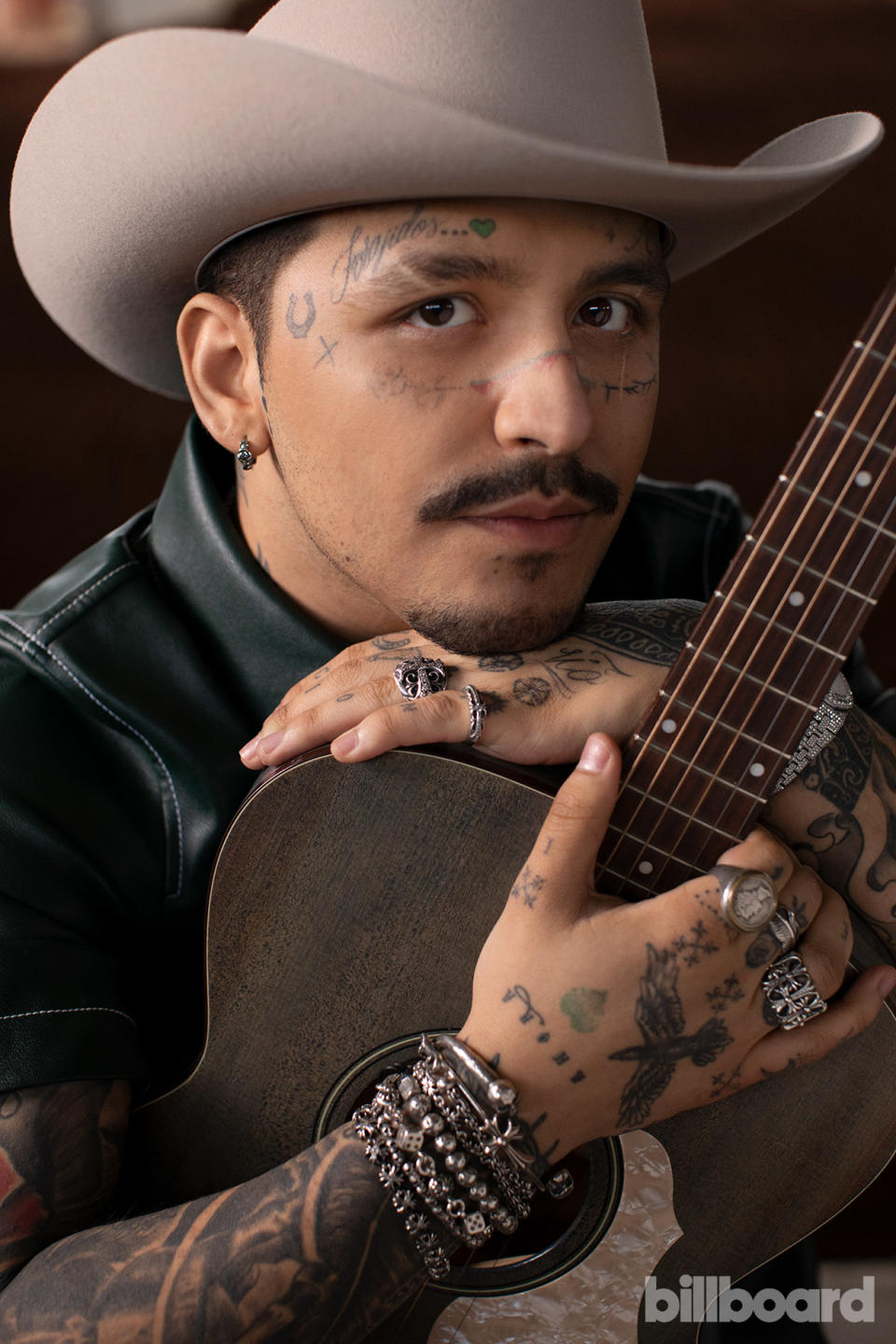
González had been more skeptical of the collaboration. “He was like, ‘No, how are you going to do that? People are going to get angry,’ ” Nodal recalls. “And I told him, ‘Listen to me: This is what we’re going to start seeing in the genre.’ ”
Nodal followed his hunch — after all, it wasn’t the first time he and his father had disagreed. “If I’ve been doing this for six or seven years, it probably took us five to create a healthy relationship between us,” Nodal says. “I would go one way, and he would go another way. I didn’t want to do what he wanted me to do. I wanted to be me. It took many years to fully understand and respect each other, and it had nothing to do with our father-son relationship. Now we are completely aligned when it comes to the business of my career.”
In October, Nodal asked friends back in Guadalajara to get him three string instruments: a tololoche, a docerola and a requinto. “It got in my head that I wanted to do a corrido tumbado,” Nodal says in early February. “I fell in love with the genre. The good thing is that my neighbors in Guadalajara didn’t complain, because the tololoche is a very noisy instrument and my apartment is not very big.” After hearing the demo, Nodal thought Peso Pluma would be a great addition. So, over FaceTime, he asked the corridos singer to meet up — which they did at one of Peso’s Anaheim, Calif., concerts in December, where they agreed to collaborate. “Hassan [Peso’s real name] has a respect for me and my career, and we had great conversations.” Nodal says. “The chemistry was there.”
The resulting team-up, “La Intención,” is both a sign of the times — younger regional Mexican artists now understand that working together only strengthens the genre — and of what has given Nodal’s own career longevity. His adaptability has not only allowed him to move among styles (like pop, cumbia and urban) with ease, but also to transcend generations and remain a constant in an ever-expanding genre that in the years since his career began has become a global movement. “When I started this career I felt a big responsibility, and I still feel it today,” he says. “Not everyone agreed with everything I did early on, but now I feel that my career is projected onto the musical criteria of young artists who dare to do things differently without being afraid.”
At 25 years old, he may be the relative elder statesman of the new (and very young) generation of regional Mexican artists, but Nodal is just as fired up as when he started. “A lot of the dreams I had, I already accomplished, but I’m enjoying whatever comes. I don’t worry about the person I have to be in the genre; the most beautiful thing is to flow with what is happening because the genre will always be there. I’ll just keep releasing music from my heart [and] enjoy the process and what my fans have given me.”
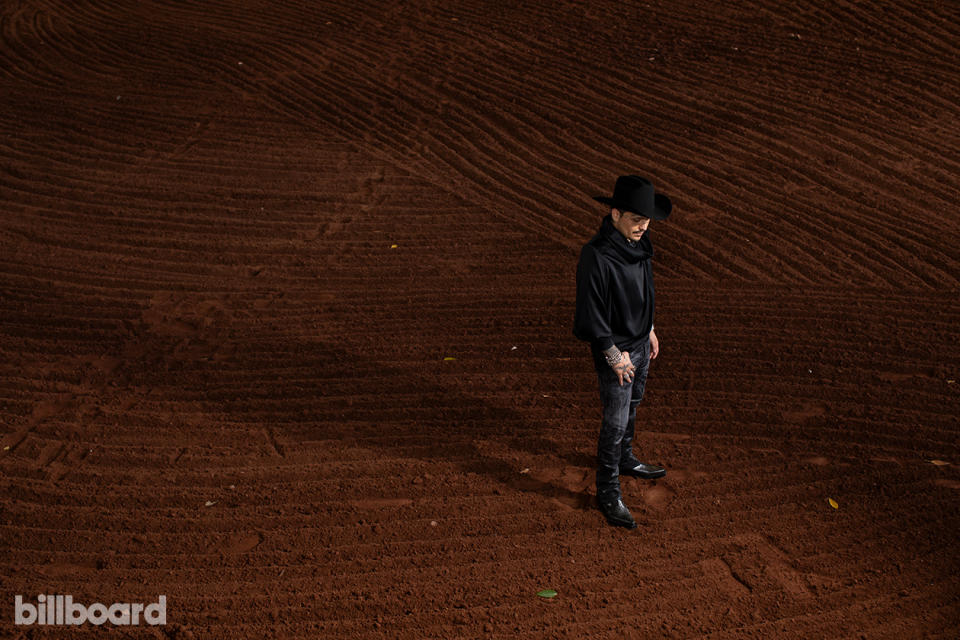
Nodal is on a monthslong break through May, which, for him, feels like uncharted territory: He hasn’t taken any real time off since his career started seven years ago. “COVID didn’t count as a vacation, right?” he jokes. “I don’t know myself in vacation mode,” he adds with a nervous chuckle, as if coming to the realization as he says it out loud.
Today, “vacation mode” Nodal sounds blissful yet invigorated. Later this year, he says he’ll release Pa’l Cora, the album of his dreams, which will include a recording session in France with his mariacheño band in tow. The making of it, along with planning and embarking on a tour with stops in countries like the United Kingdom and Switzerland — a major milestone for an artist in a genre that typically doesn’t book European shows outside of Spain — will be captured in a behind-the-scenes documentary.
These shows, and this album, were for a long time simply dreams for Nodal. “I was constantly pressured to keep moving,” he says. Now, from his home base in Argentina, he’s able to lead a more balanced life, one in which peace and moments of inspiration aren’t mutually exclusive. “I don’t think my life has changed because of where I live but because of how I am living my life,” he reflects, sounding wise beyond his 25 years. “I think this time away from being up and down, connecting with what I love has made me realize how lucky I am. I am at my best stage in every way, in all aspects. There is a light in my life that no one can take away.”
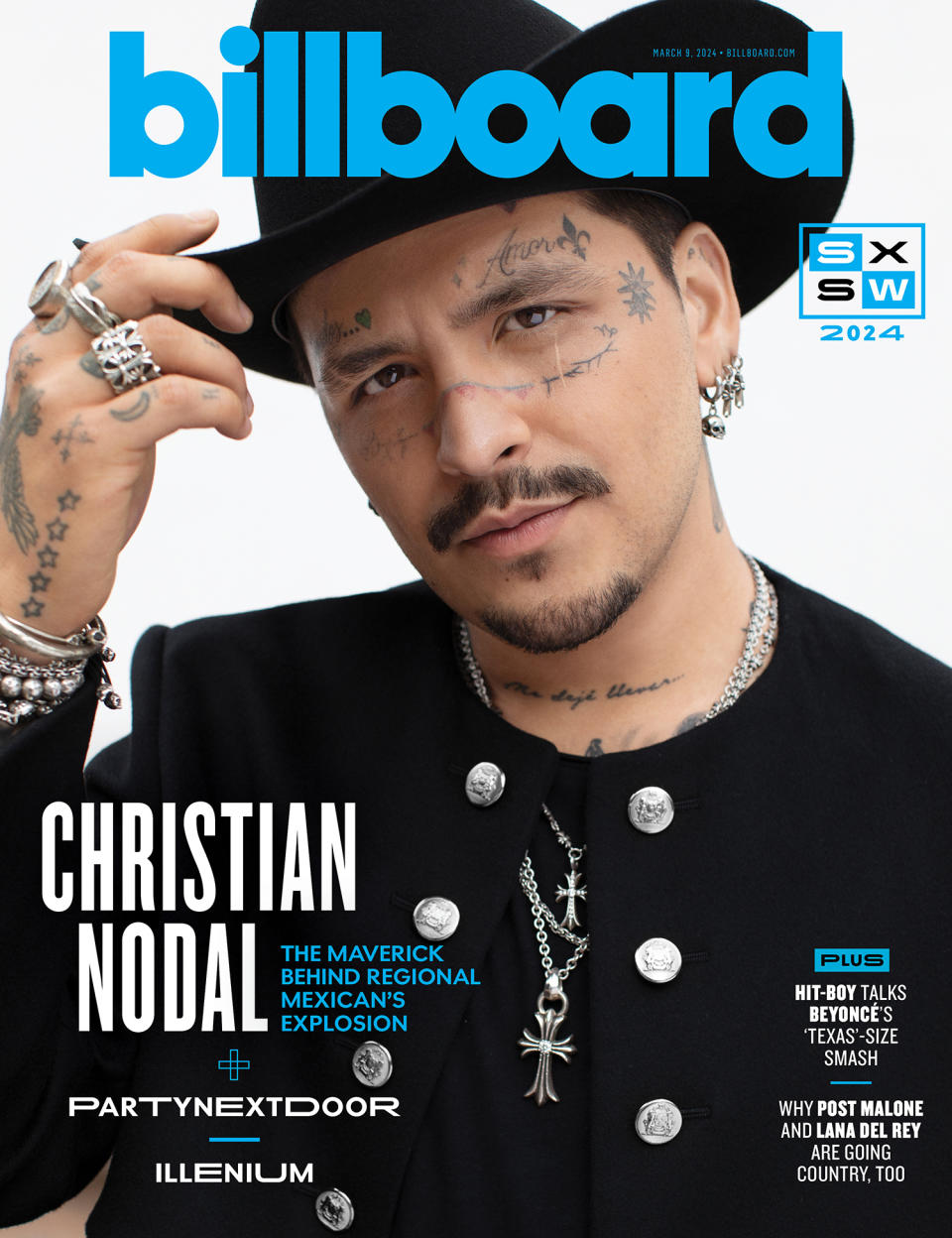
This story originally appeared in the March 9, 2024, issue of Billboard.
Best of Billboard
H.E.R. & Chris Brown 'Come Through' to No. 1 on Adult R&B Airplay Chart
Anne Wilson's 'I Still Believe in Christmas' Crowns Christian Airplay Chart

